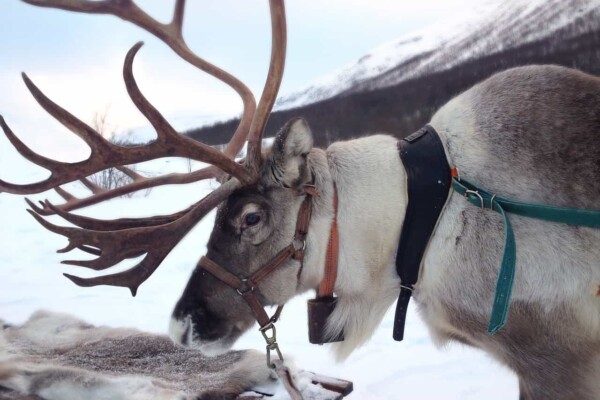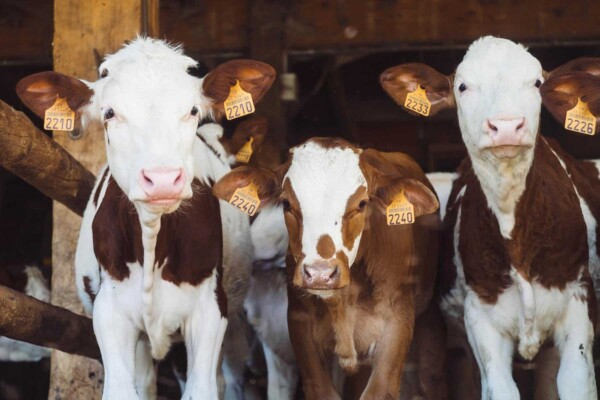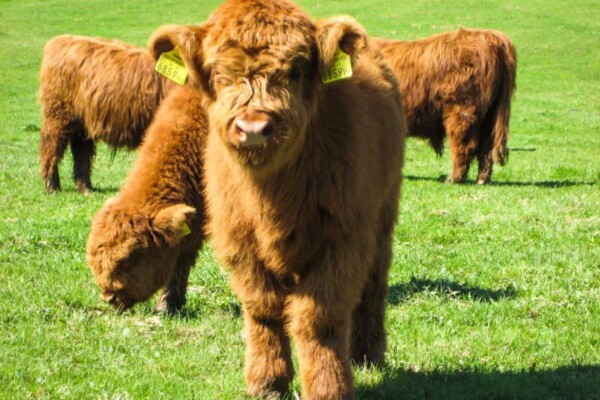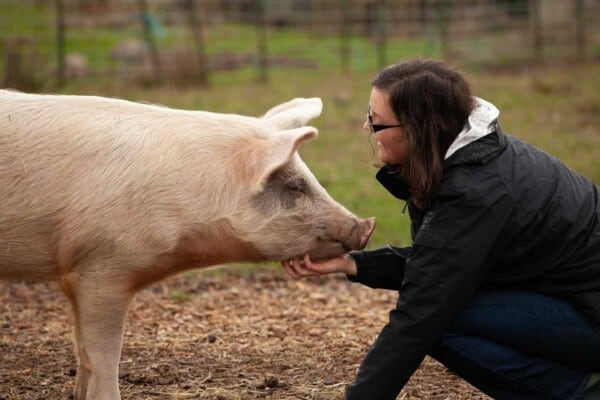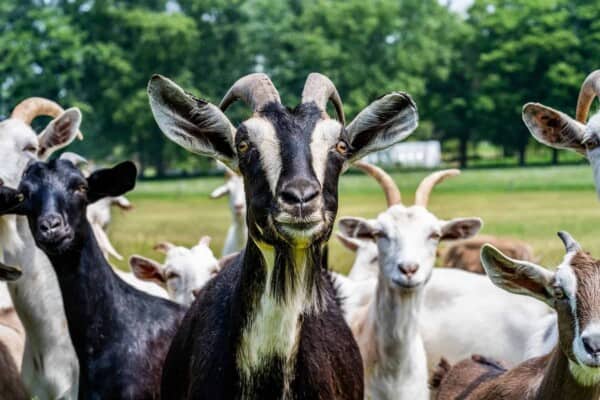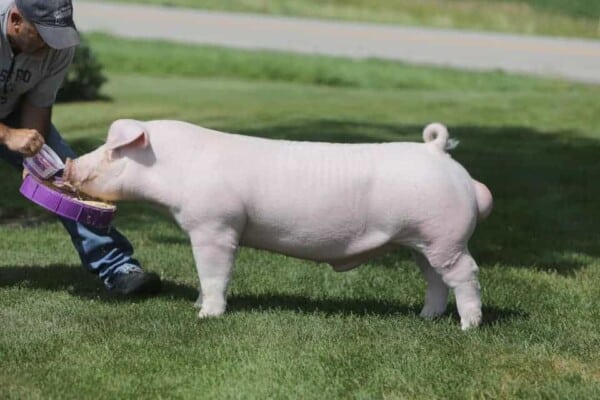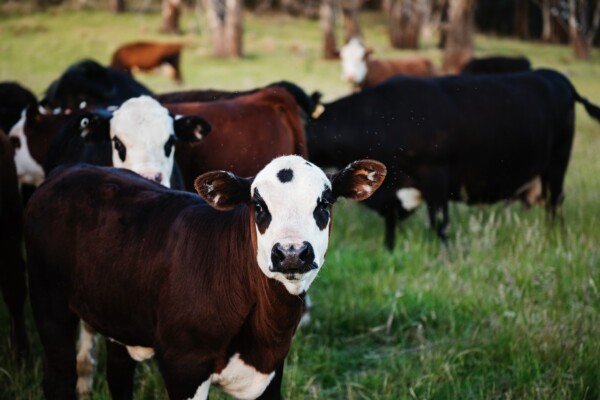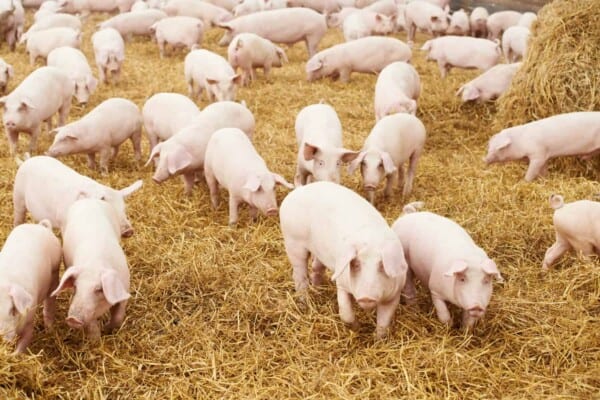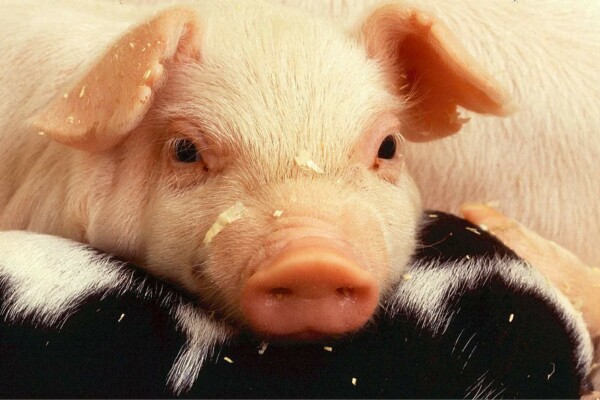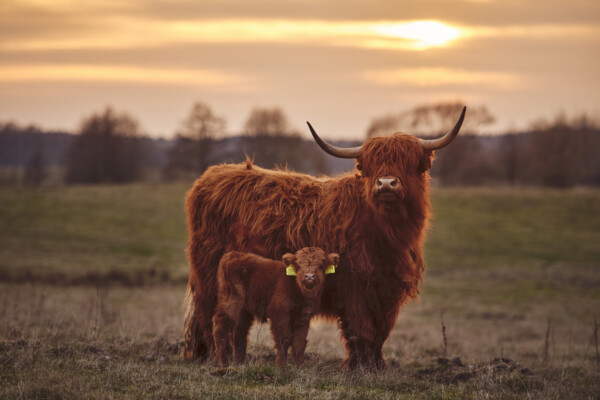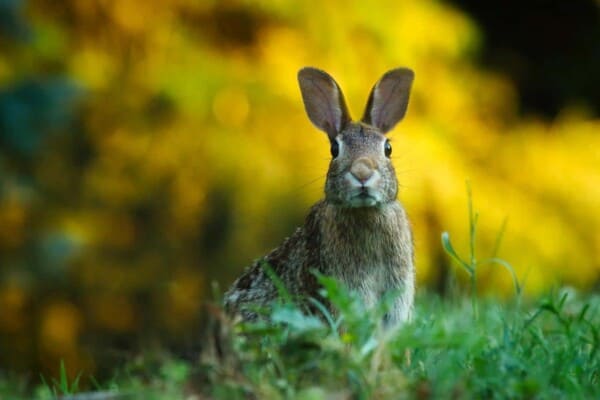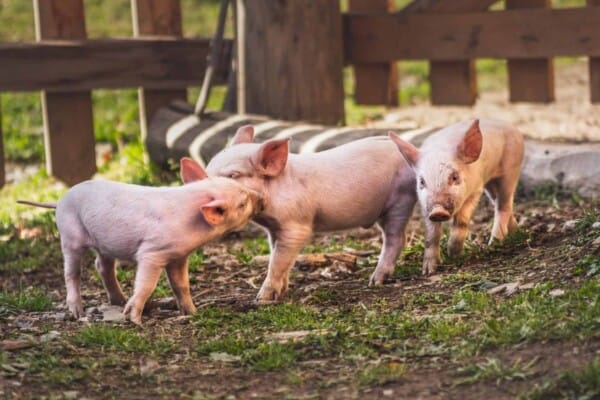The Ankole-Watusi cow is often times referred to as the show-stopper of the bovine world, and you can tell why pretty much right off the bat.
These medium-sized animals sport some of the longest and largest horns you’ll ever see, making them some of the most unique looking bovines on this planet.
These horns are so large and majestic in fact, that they’ve even been referred to as the royal family of the bovine world, pretty much classifying their horns as a crown that they wear to show off their royal ancestry.
These animals go as far back as 6,000 years or so, and while not everything about them is known, the little that we do know is definitely worth looking into if you want to see why these “cattle of kings” are so unique after all.
So, let’s start off our analysis of the wondrous Ankole Watusi cattle with a simple introduction of its impact over the years:
The Origins of the Ankole Watusi Cows
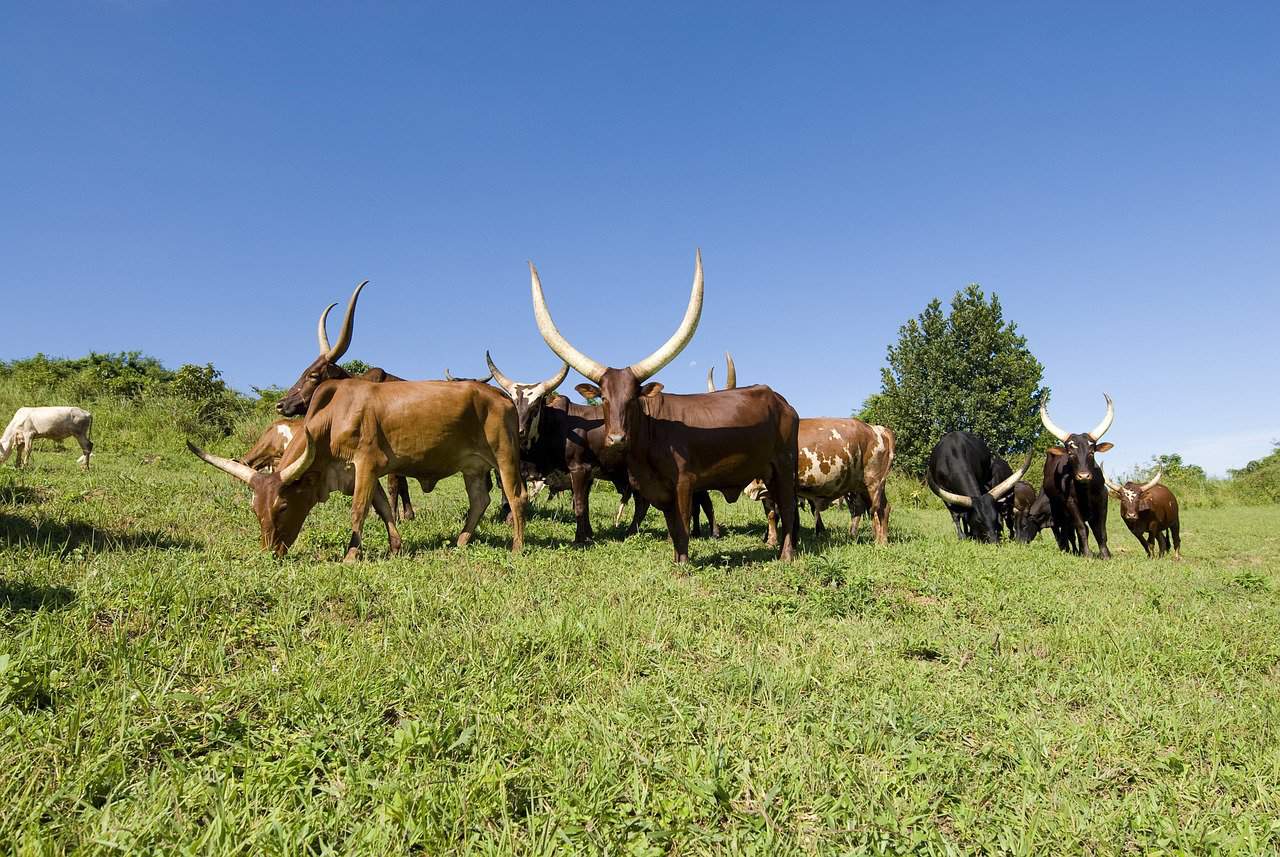
The Ankole Watusi cattle were first discovered around the Nile Valley in 4,000 BC. They were known as the Egyptian or Hamitic Longhorns back then, and they can be seen in many different pictographs around Egyptian pyramids.
But they didn’t stay here forever, instead making their way all the way to Ethiopia 2,000 years later, only to then spread all the way to the southernmost sides of Africa.
By the time the year 2,000 BC came along, the humped cattle known as the Longhorn Zebu from Pakistan and India managed to get to Africa too, and so it didn’t take long before they were sold off to Ethiopia and Somalia.
Here, the breeders decided to interbreed them with the Egyptian Longhorn, which led to the creation of the Sanga cattle.
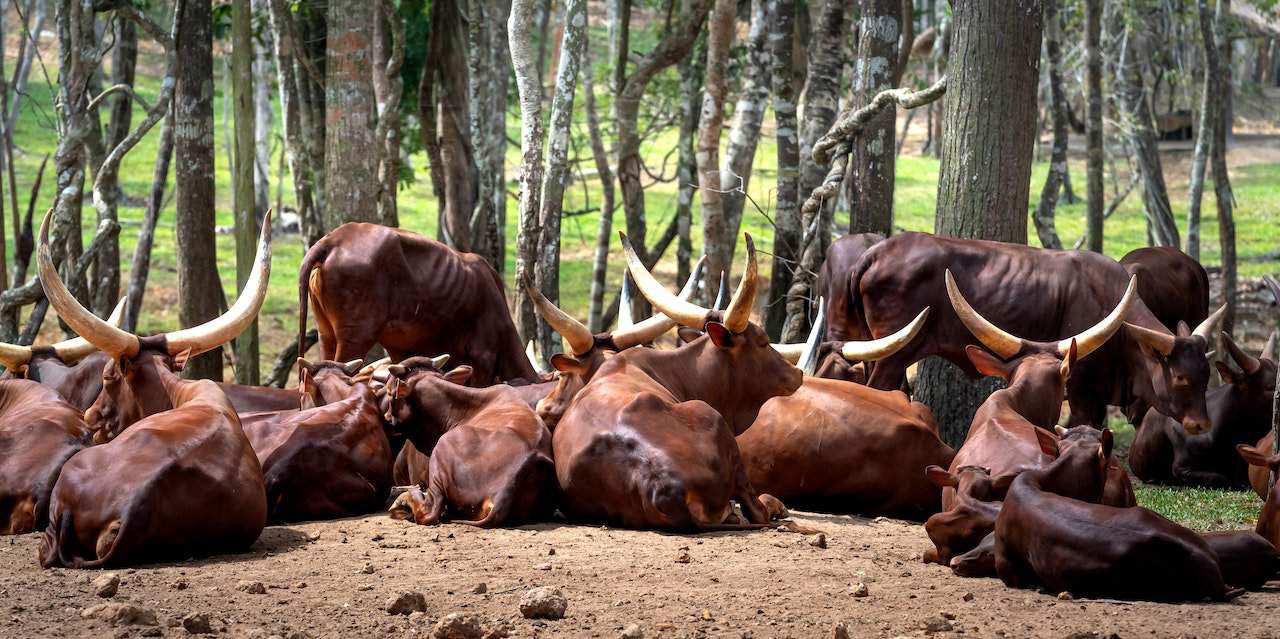
This new cattle breed was quite a looker to say the least, as it managed to gain quite a lot of traction in a very short period of time, making its way to Sudan, Uganda, Kenya and pretty much every other part of the eastern Africa at the time.
In fact, you can actually attribute the Sanga cattle the nickname of the forefather of most of the indigenous African breeds you see today, as they were so successful in their interbreeding that they managed to spread their genes all throughout the bovine world.
The Sanga also had most of the typical Zebu characteristics, including a pendulous dewlap and sheath, upturned horns and of course, their signature neck hump which varied depending on the specimen itself.
Because of how much interbreeding happened back then though, it’s no wonder that today, you can look at any of the modern Sanga descendants and not see a single similarity amongst one another, with them varying greatly in size, horns, conformation and whatnot.
This is because, depending on the tribe that owned the Sanga cattle, different interbreeding happened altogether.
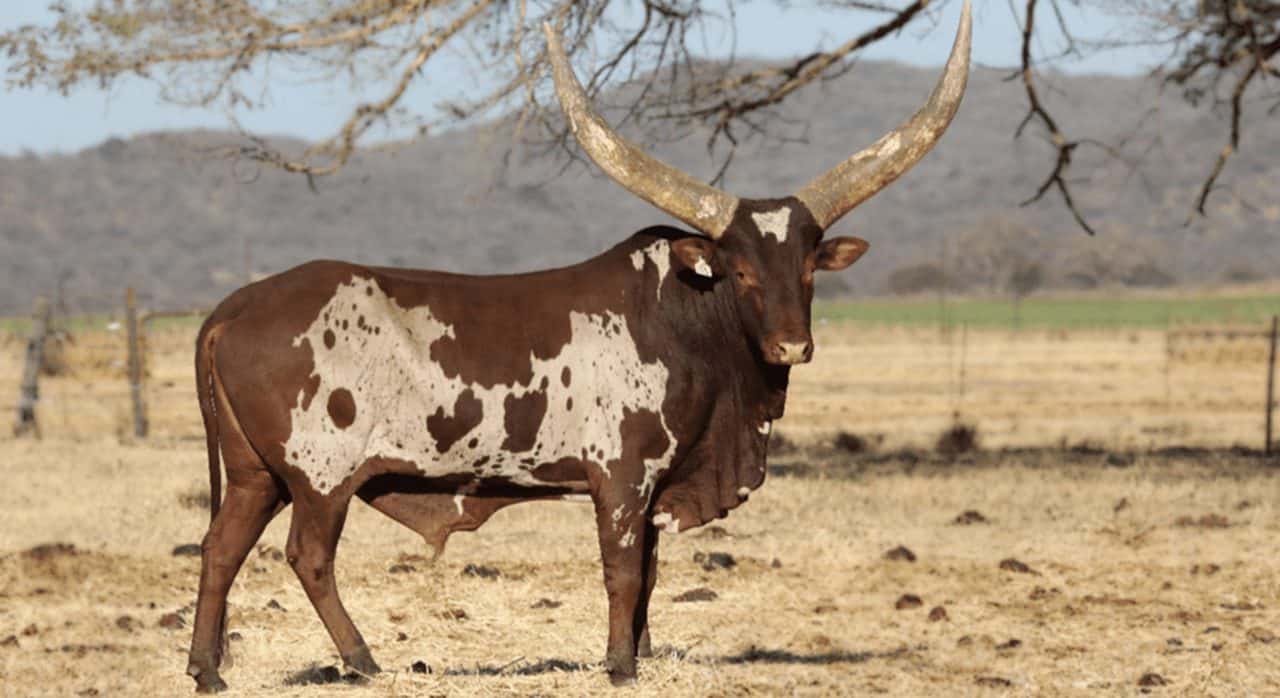
But today we would like to focus on a certain type of Sanga cattle, and that is the type that can be found in Uganda, Rwanda and Burundi.
This modern descendant of the Sanga from Uganda is known as the Ankole, and if you do happen to get your cattle from Rwanda and Burundi, then chances are that you are purchasing it from the Tutsi tribe’s variety which is also known as the Watusi.
Rwanda’s common strain of Watusi is known as the Inkuku, and, while it may not seem like it, it was a bit of a fan-favorite for the Tutsi kings and chiefs, although there are some speculations that the Inkuku strain is now long lost and that the modern Inkuku cattle has nothing in common with it.
Back in the day though, the Ankole-Watusi were considered to be sacred, which is why they were almost never used for their meat back then.
For the most part, they were taken in as milk suppliers, and as is common in Africa, the butchering of the sacred animal was considered to be a great offense to the religious.
So, for the most part, you will see that the Ankole-Watusi cows are kept around in large pasture zones where they can graze all day long, only to then be brought back home to their young calves.
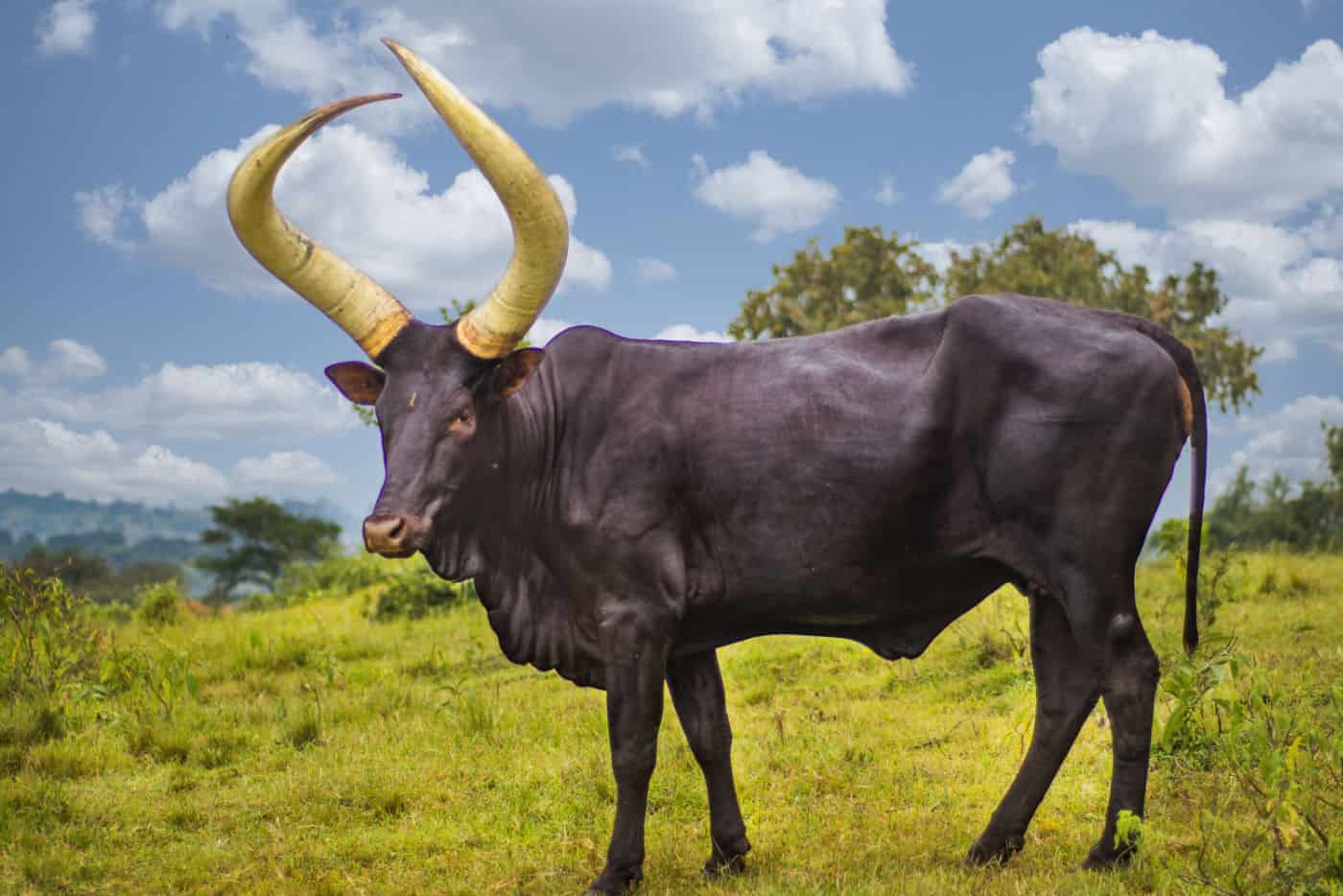
The calf would be allowed to suckle the tit briefly in order to stimulate the milk letdown, but as soon as the milk started to pour down, the calf would be removed and the herdsman would start milking the cow himself.
As soon as the milk would start to run dry, the calf would be allowed to finish the job, after which it would be separated from its mother.
This process would be repeated endlessly in order to make sure that the influx of cows would be constant and that there would always be milk production around the house.
The problem with this process though is that it would often times result in the calves not getting enough nourishment to survive, which is why their death rates are so high in the first place.
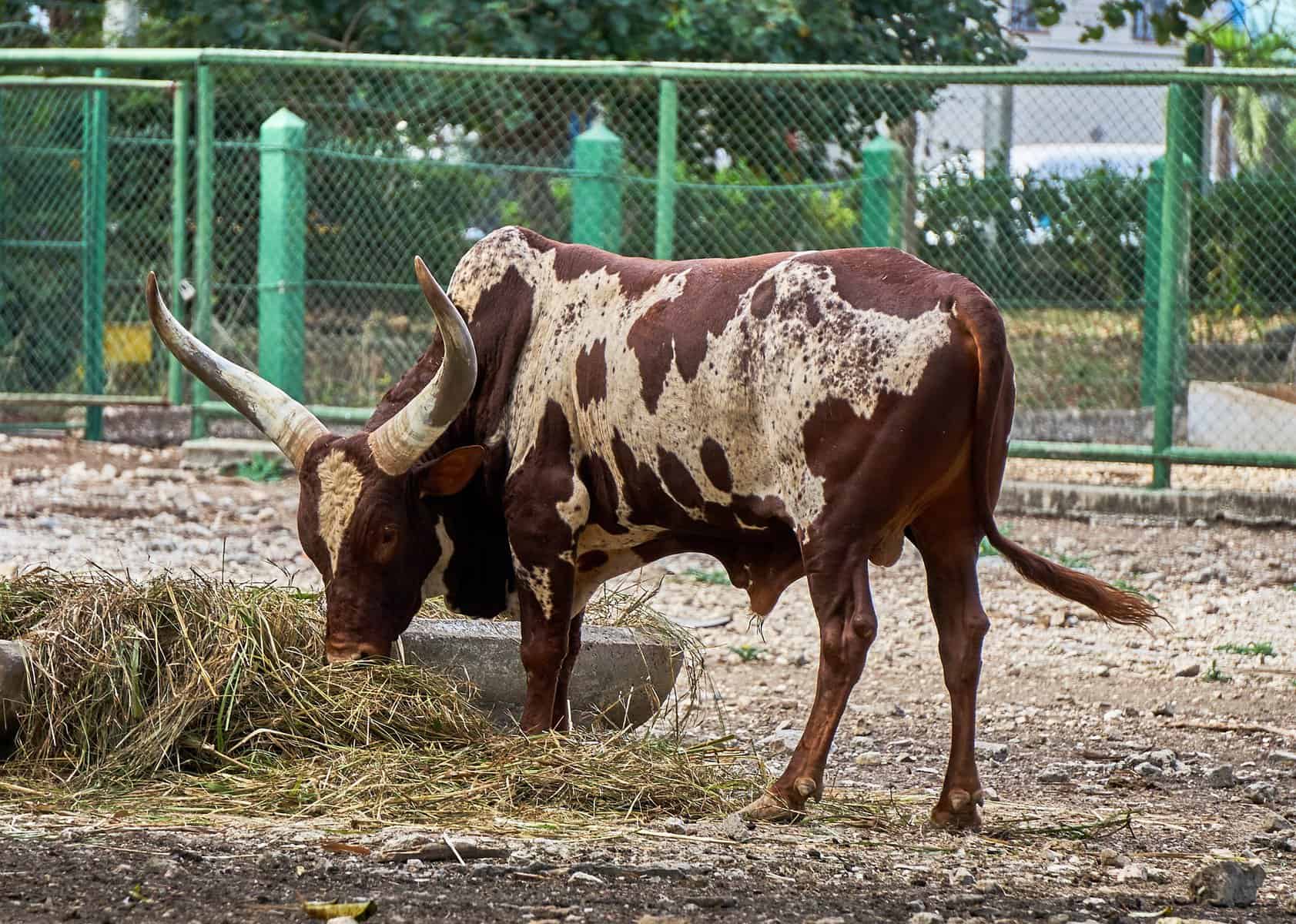
Normal cows don’t really get this problem because they can produce a lot more milk than is needed to keep the calf fed, but the typical Ankole-Watusi can only produce as much as 2 pints of milk a day, which is nowhere near enough to keep a whole family fed alongside the calf.
On top of all of that, the lactation period is very short which is why, although the country officials have attempted to fix this problem over the years, they haven’t been successful as of yet.
There has been an attempt over the past decade or so to select the Ankole-Watusi cattle that can produce more milk and have better meat production and to overbreed them to make sure that the families have what to eat over the winter.
But these attempts have been slowed down by the constant famine, disease and traditional practitioners that are against the mass production of the breed.
Appearance and Characteristics
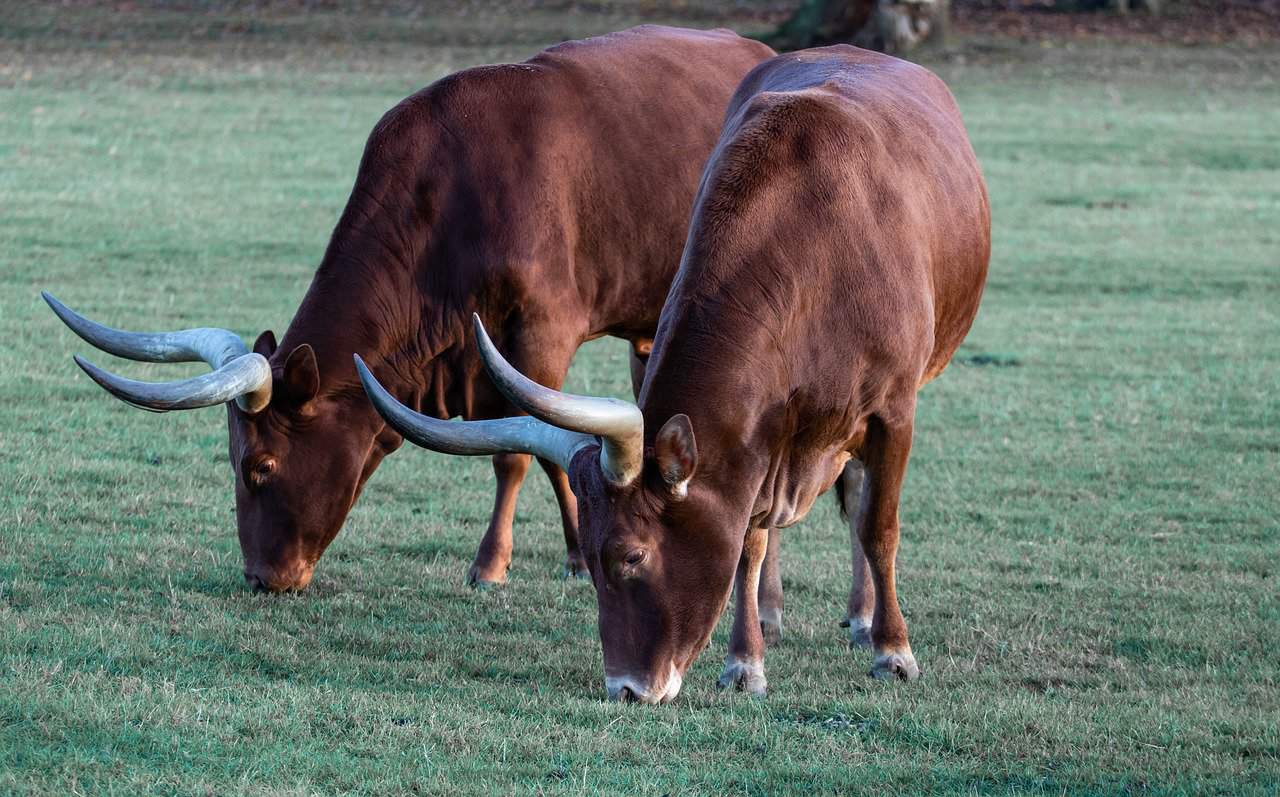
The Ankole Watusi cow is a medium-sized specimen that can weigh as much as 950 to 1,200lbs or 430 to 540kg in total. The bulls can weigh as much as 1,200 to 1,600lbs or 540 to 730kg though, which is why there have been so many attempts to mass produce and sell them for their meat over the years.
The newborn calves only really get to weigh around 30 to 50lbs though, which is around 14 to 23kg in total. Because of their malnourished past though, they will remain this small for several months, pretty much stagnating here until they can spring up and finally grow.
If you happen to see an Ankole Watusi cow in front of you, chances are that you will be intimidated immediately by their beautiful, graceful horns and their general size.
The typical Ankole Watusi cow also has a pretty straight topline and a sloping rump, and while this doesn’t apply to all of them, some have a pretty large hump protruding from their neck.
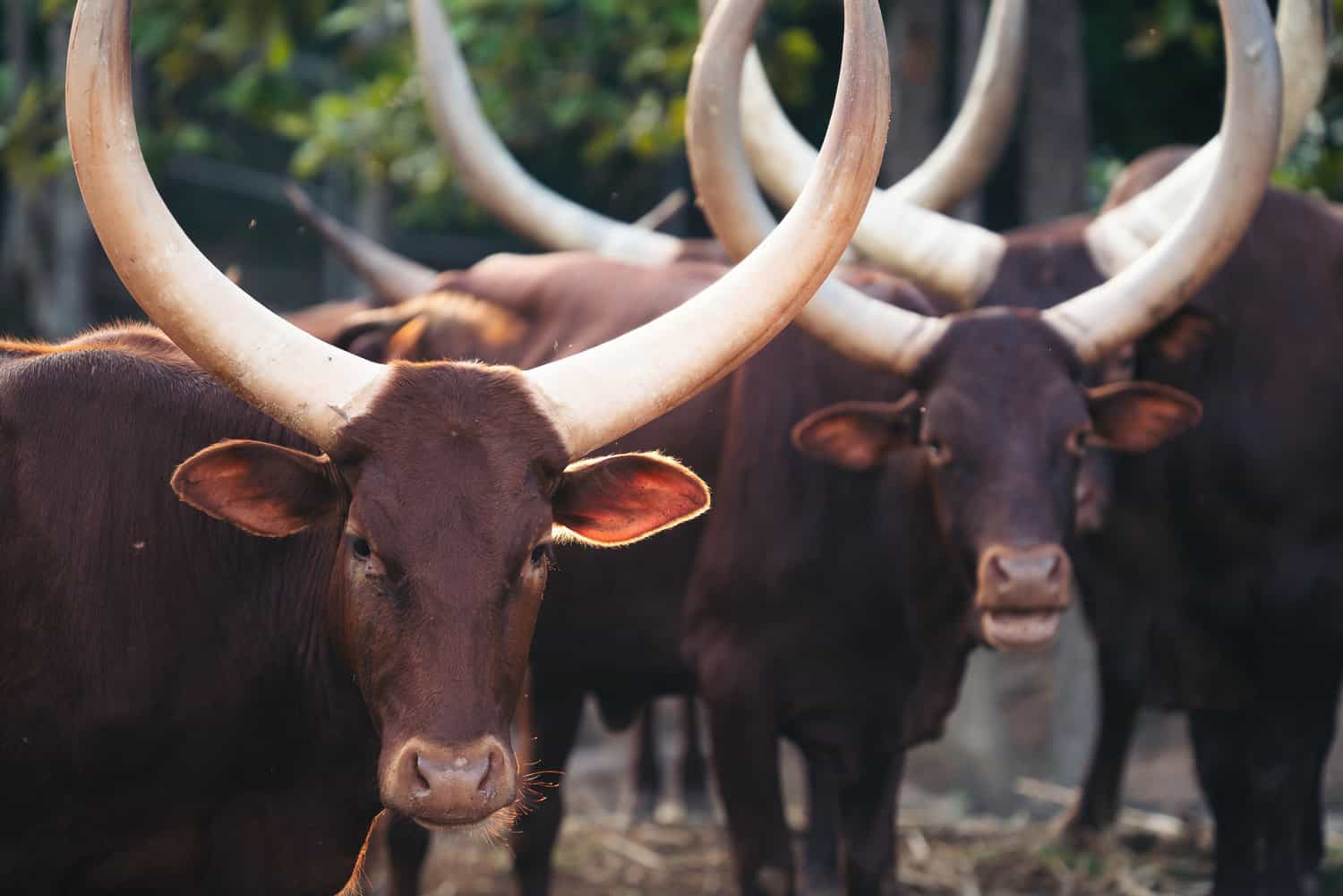
As far as their general look is concerned, some of them can be spotted or just solid in color, and when it comes to the shade, you’ll usually see them sporting a dark red, although they can also be seen with any color that any other cattle may have, including red, brown, yellow, dun, white, grey and black.
Some Ankole Watusi cows may also have small white spots or large white splashes over their bodies, and it is entirely dependent on the specimen whether they’ll have anything in the first place, so you can’t be sure that the calf will have the same pattern as the adult.
By far their most distinguishable feature is their horns though. They have long and symmetrical spearheads for horns, with a base large and proportional to the horn’s length.
The Ankole Watusi’s horns will also usually be lyre or circular shaped, as opposed to them being flat, which is what other cattle may have.
During the day, the calves are kept together in order to make sure that they are safe. On top of that, you should also have a nearby “auntie” cow which is ready to protect them no matter what moves for them.
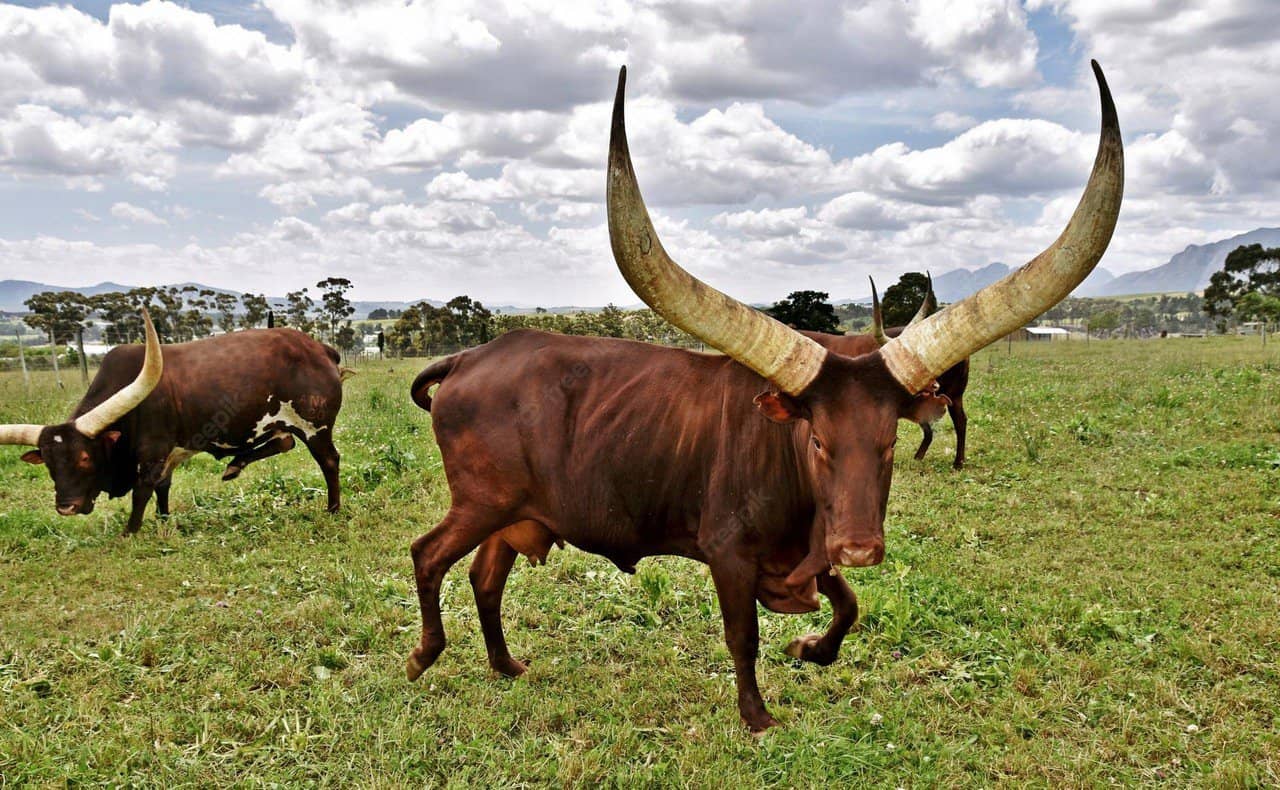
During the nighttime though, things change, because one auntie cow is no longer enough to make sure that they are properly taken care of.
This is why every member of the herd will come together and sleep in a circle, keeping the calves in the middle so that nothing can sneak up on them.
Interestingly enough, the Ankole Watusi cow may be one of the most formidable fighters in the bovine kingdom, since they can defend themselves against most intruders and even push back some serious predators that most other cows would fall prey to in no time.
This is due to the sheer size of their horns, as the adults can use them to easily push back and intimidate most other animals around them.
Owning a cattle herd is considered to be a sign of wealth in the tribe, because not many people can afford to own more than one Ankole Watusi cow at once.
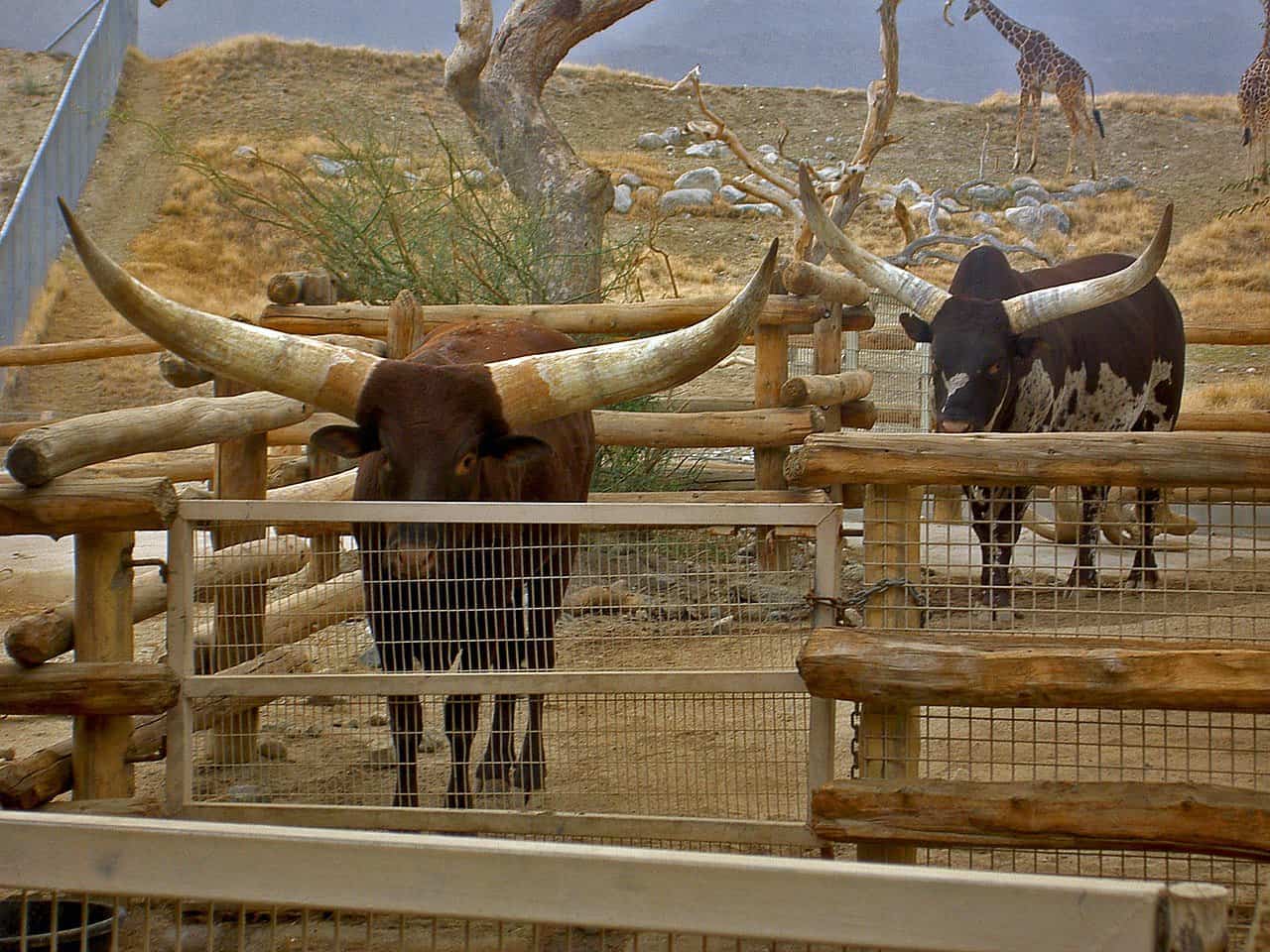
If the whole tribe is going through a famine for example, these animals are sacrificed so the people can live, which is why the herd owners are considered to be some of the most powerful men in the tribe.
They are also used in ceremonies a lot of the time, especially so for when the youngsters come into adulthood.
Sometimes, the cow will also be milked and bled, which creates a sort of yogurt like high protein drink which is then drank by the youngsters.
So, actually owning an Ankole Watusi herd is pretty much the best way that you can tell if a man holds a powerful position in the tribe, with the hierarchy pretty much being established by the number and quality of animals that the man owns.
Interestingly enough, while they may not look it, the Watusi cows and bulls are exceptionally long-legged creatures, which gives them the ability to jump and run around very quickly.
This is because, living in the wild has caused them to always be afraid of potential predators, so they often times need to run and jump over fences, bushes or into the predators themselves in order to escape.
Milk Production and Behavior
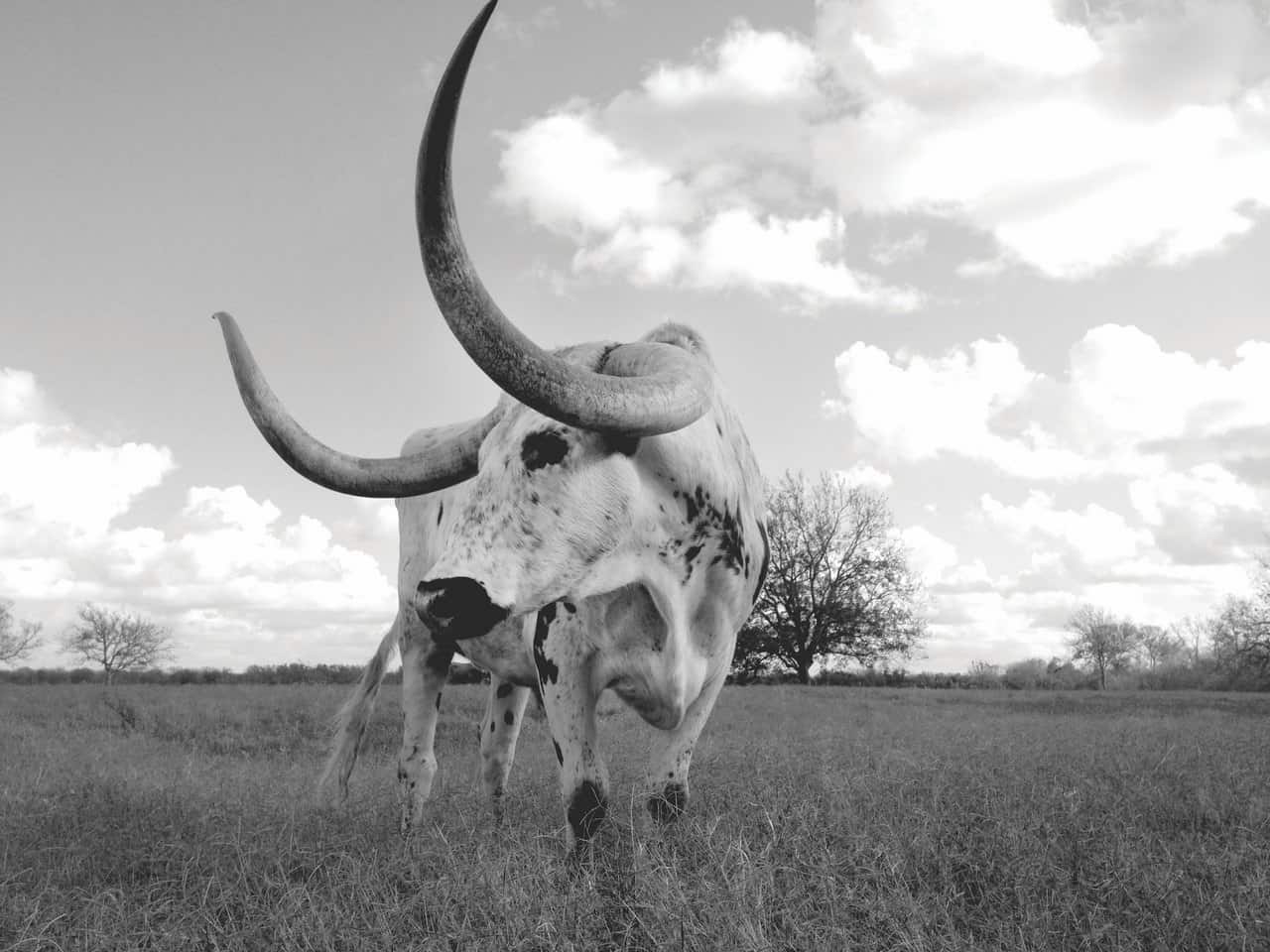
The milk that they produce is quite fat, having a very high volume of butter fat, which is why it is so popular amongst African tribes.
As soon as the calves are born, they are especially alert and capable of running as fast as their mothers with ease.
Because they live in constant danger though, they can be a bit more violent than you’d want them to be, so definitely keep a close eye on them if you happen to invoke their wrath.
Trust us when we tell you that while they are generally pacifists and highly social creatures, if you happen to come a bit too close to their calves, chances are that you’re going to get a better look at their horns than you’d want to.
Fun Facts About the Ankole Watusi Cows
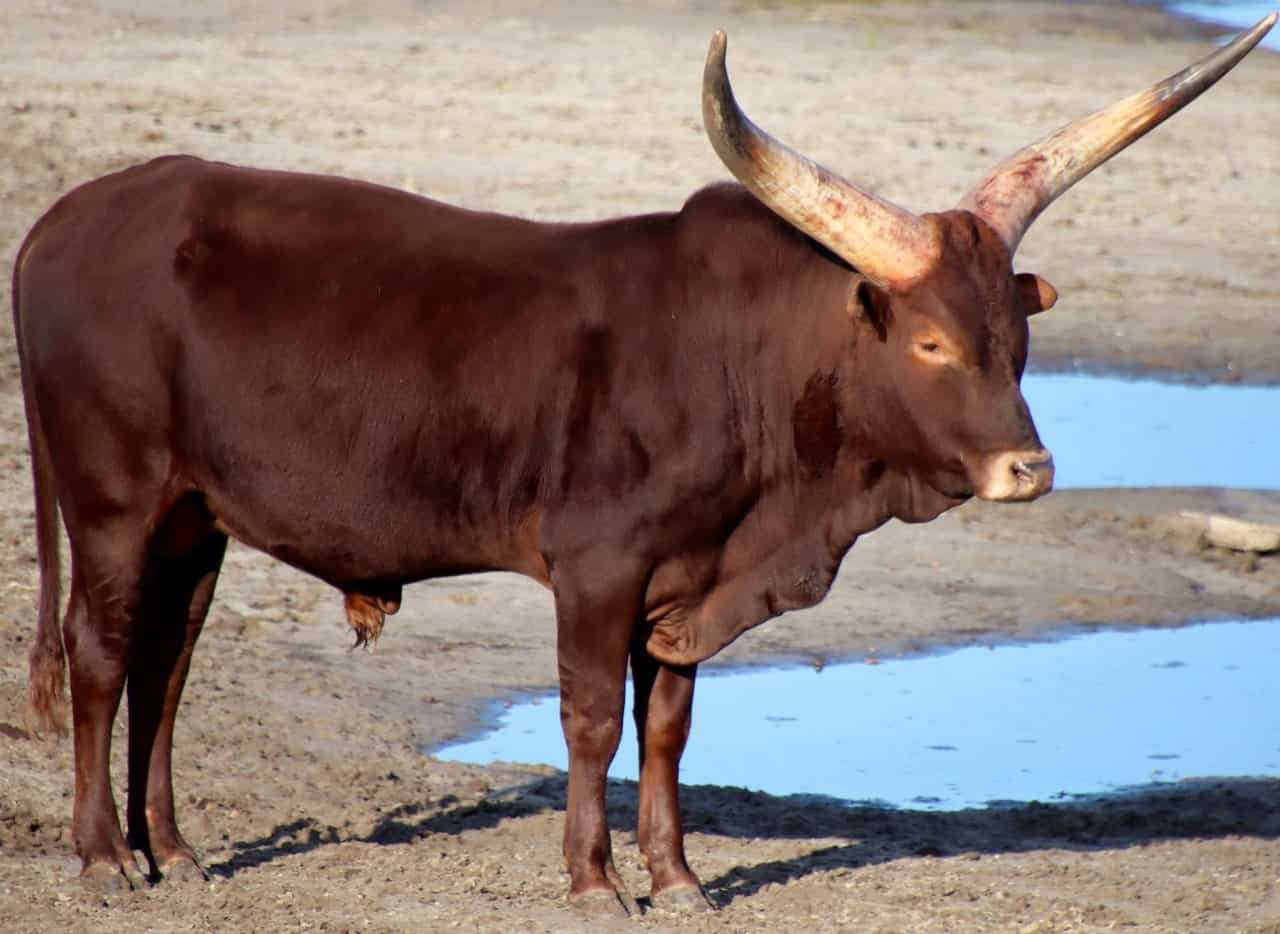
Now that you know what the Ankole Watusi cows are used for, why they’re so unique in the first place and their rich history altogether, how about we give you a brief rundown of everything else that you may want to know before you head off, starting off with:
1. They Are Domesticated
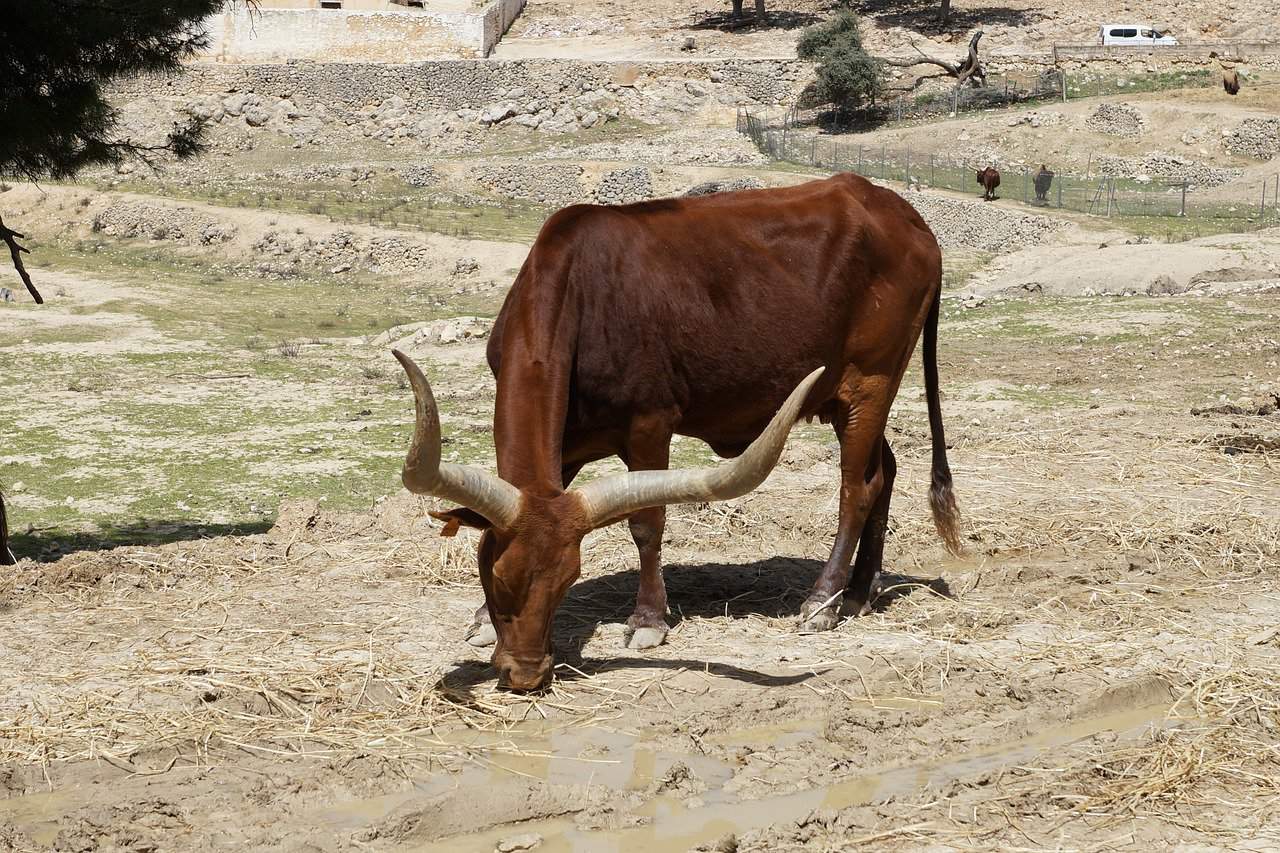
While you can find them around the Safari Journey, just keep in mind that the Bos taurus is not a wild animal to begin with.
They are usually kept in enclosures, but they can also make their way around the open fields in some cases. They have been domesticated by the Tutsi, Bahima, Ankole and Kivu cultures though so there’s now way they could ever be referred to as wild animals nowadays.
2. They Can Survive Drought Better Than Most Other Cattle
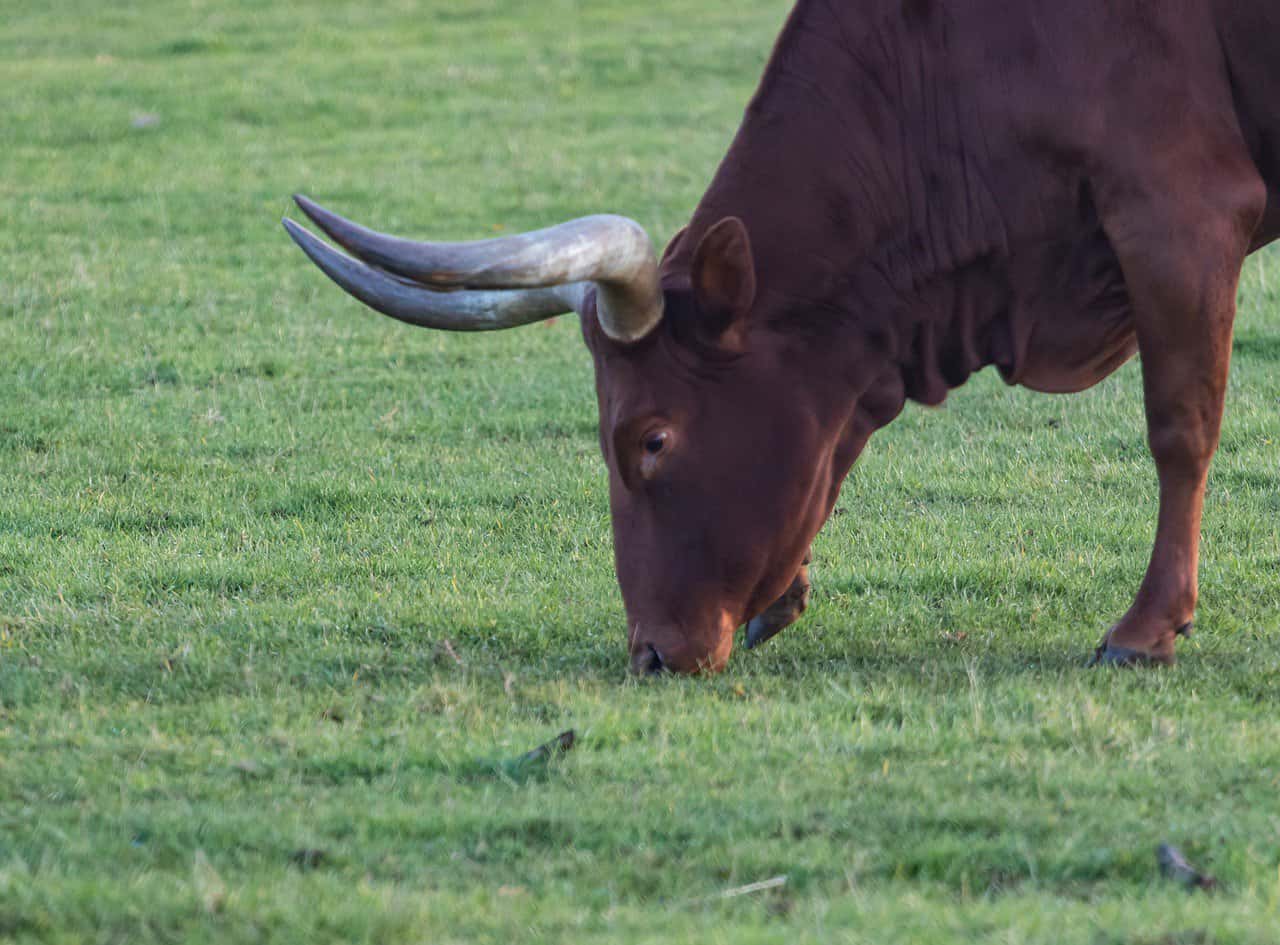
The Watusi, are a product of selective breeding, and as such it’s no wonder that their strain has been perfected so that it can survive even through the toughest drought around.
They have evolved to adapt to the harsh dry seasons around, which is why they are actually so popular in warmer climates in which most other cattle couldn’t survive without extensive help.
3. They Are a Status Symbol
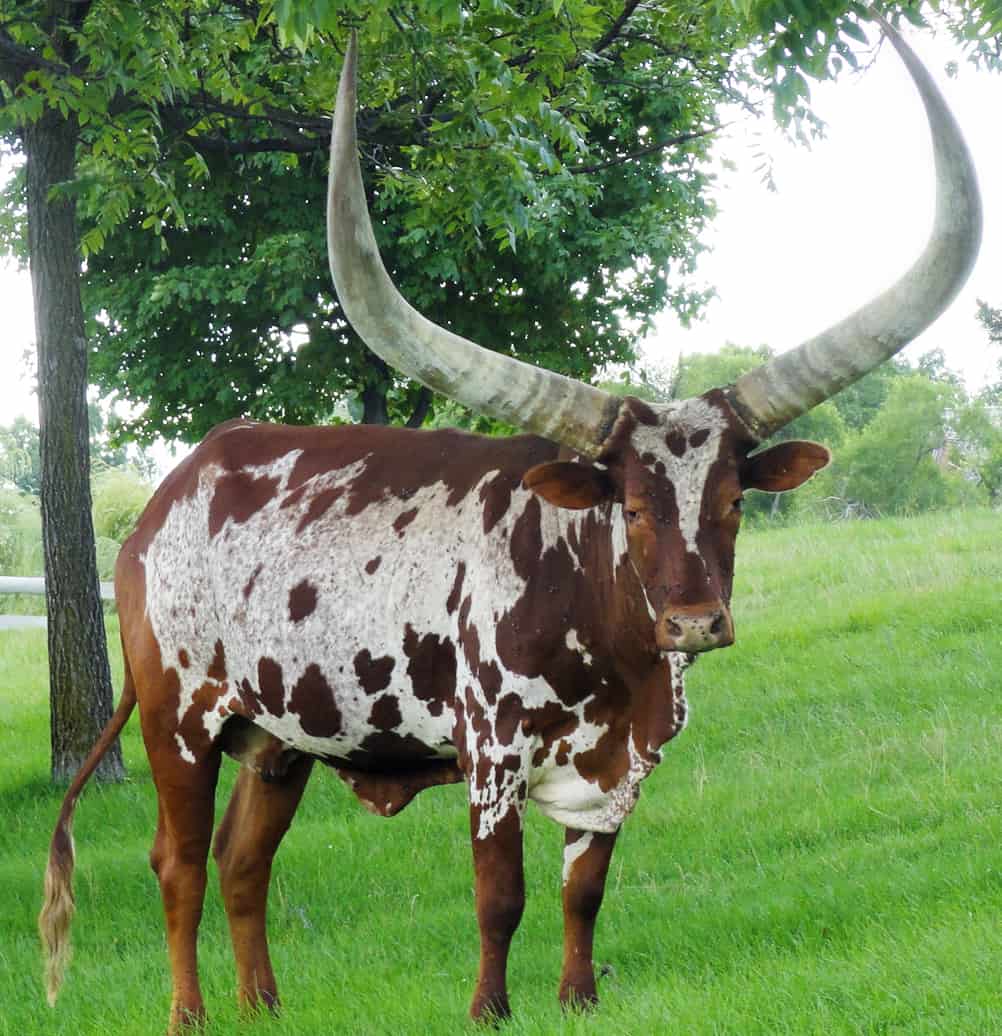
We already mentioned this previously, but it’s still so interesting to say that within the Tutsi, Ankole, Kivu and Bahima cultures, owning a Watusi cow or a herd is a sign that you’re quite a wealthy individual and as such you’ll be respected by the locals at all times.
Buying one is pretty much a way to show off your wealth, think of it like when your rich neighbor buys himself a Lamborghini and from the moment you hear it purr in their garage you already know they are flaunting their wealth in front of you.
4. They Are Bad Milk Producers
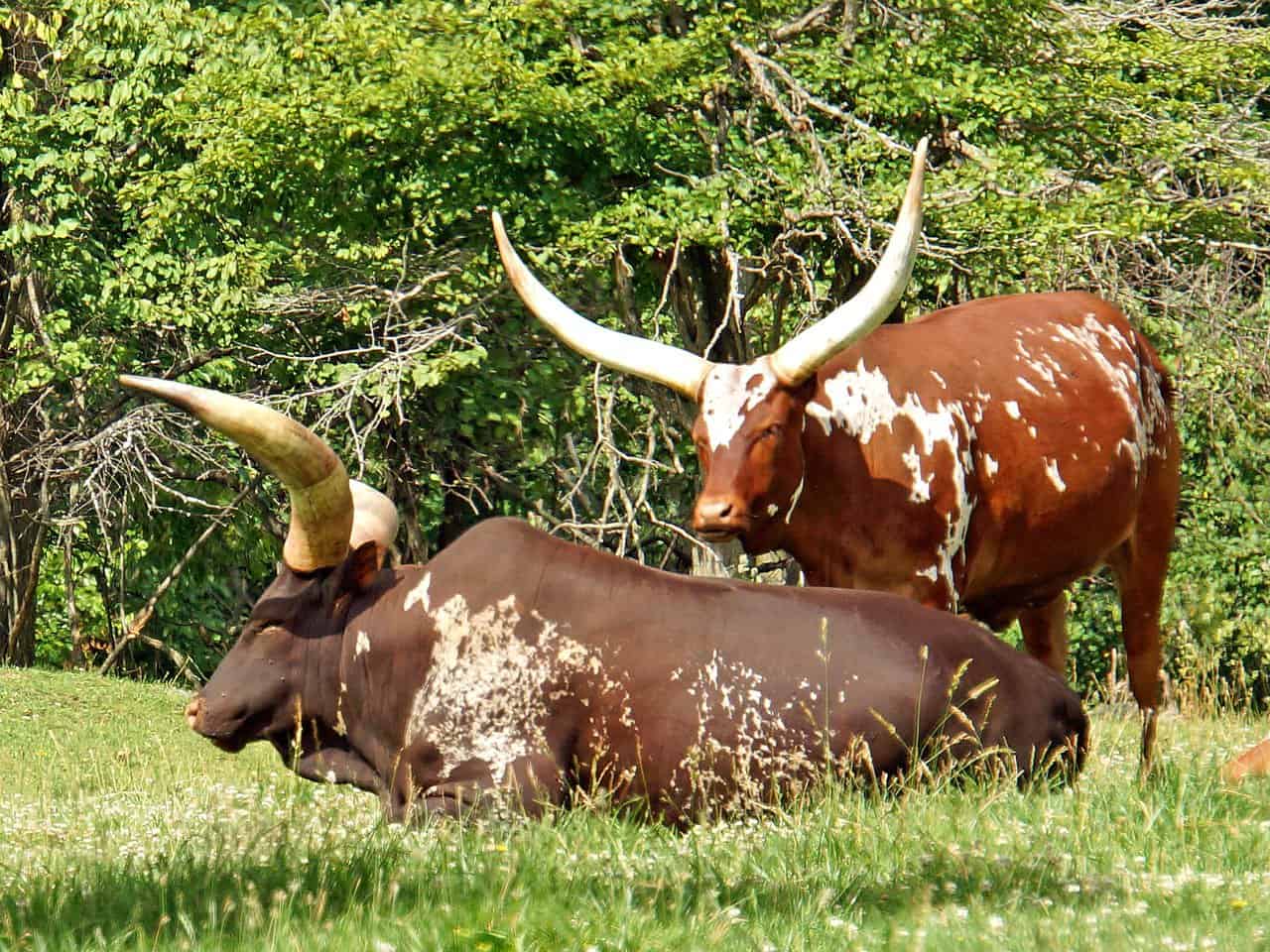
Interestingly enough, despite the fact that they are primarily used for their milk production, they are not all that good at this in the first place.
They can barely produce as much as one liter of milk during their lactation period, which is why so many people tend to use them for their meat instead. Compare that with the standard 20 liters per day that a Holstein-Frisian cow can produce and you’ll see why they are so unpopular around the West.
The problem here though is that they are considered to be sacred animals, so actually butchering a Watusi cow is akin to committing a religious offense of the highest degree.
On top of that, owning a Watusi cow is pretty much a statement of your wealth at the time, so getting rid of it would make you seem poor by comparison.
5. They Defend Their Calves When They Sleep
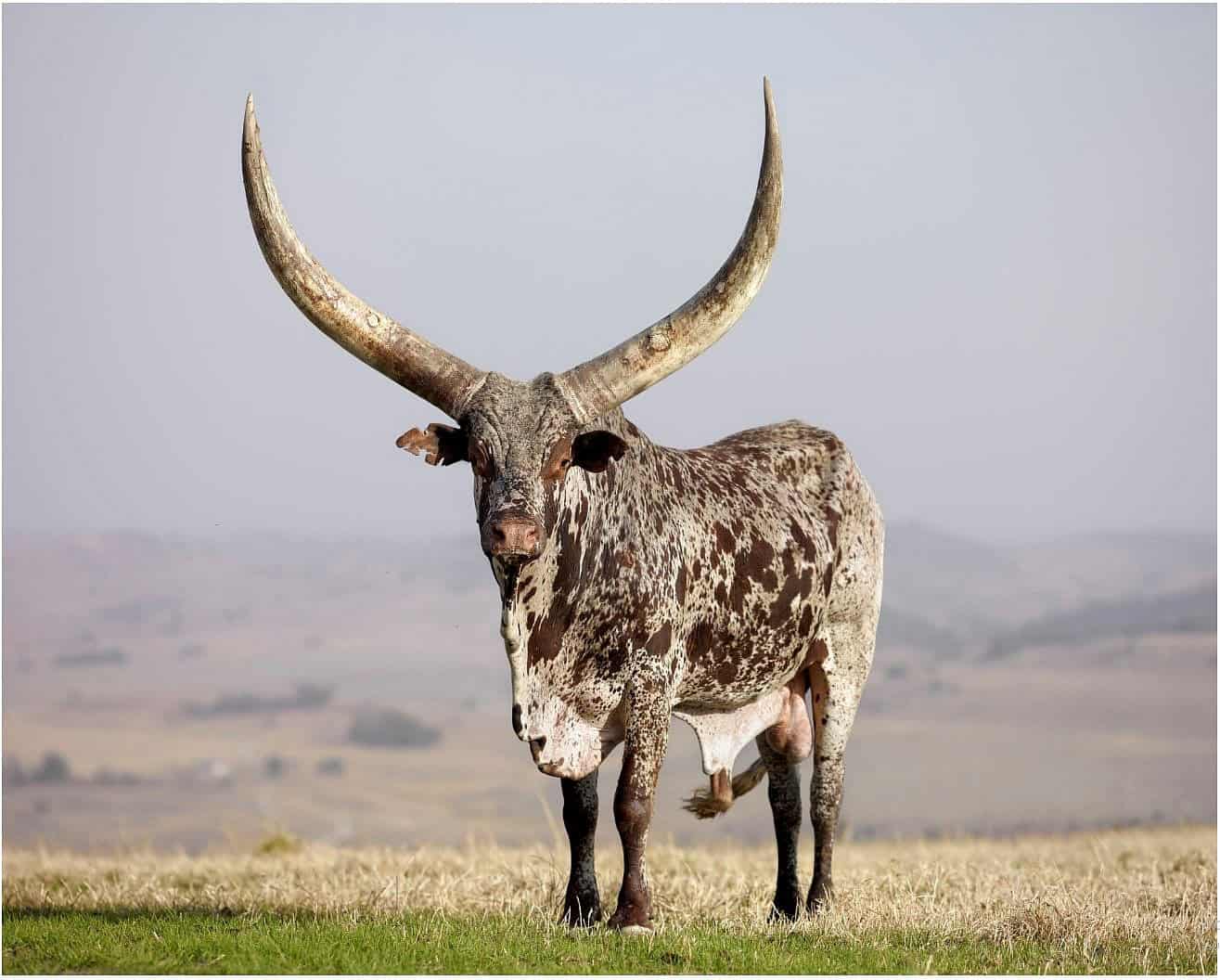
This behavior is actually unique to the Watusi cow, as they gather up when their calves sleep and they circle around them so that they can protect them from every corner.
The calves will also always sleep close to an adult female, regardless of whether that is their mother or not.
Because of this, we can safely say that the Ankole Watusi cows are some of the smartest cows in the bovine kingdom, since they use their size, horns and formation to keep their calves safe at all times.
Conclusion
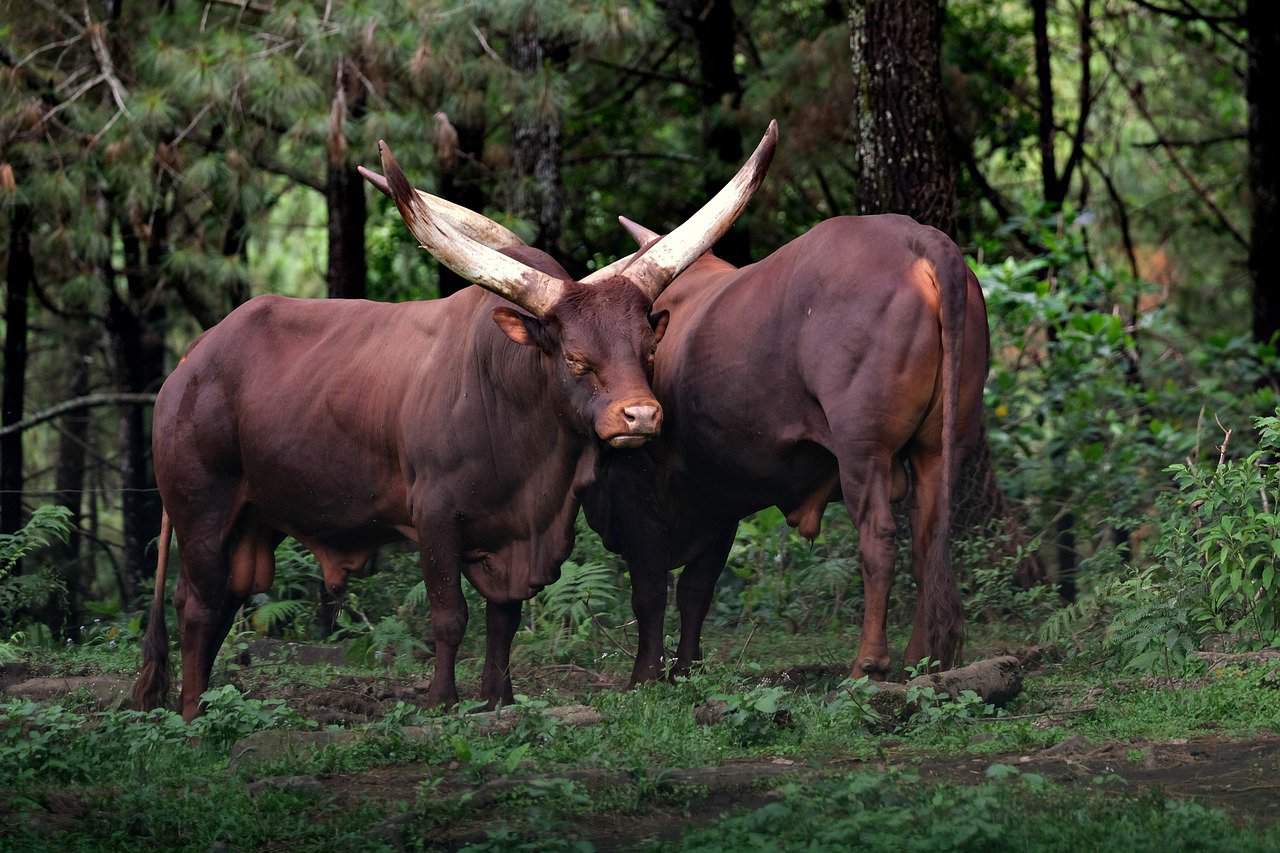
So, there you have it, by far one of the most unique looking cow breeds in the world, the Ankole Watusi cattle.
In recent years, they have been imported from Africa by European zoos around Germany, Sweden and England, which is why you may be able to come across one or two if you’re lucky.
So, if you can actually find one, be sure to treat it with the respect that it deserves because, believe it or not, you are staring at the bovine equivalent of the royal family right now.

